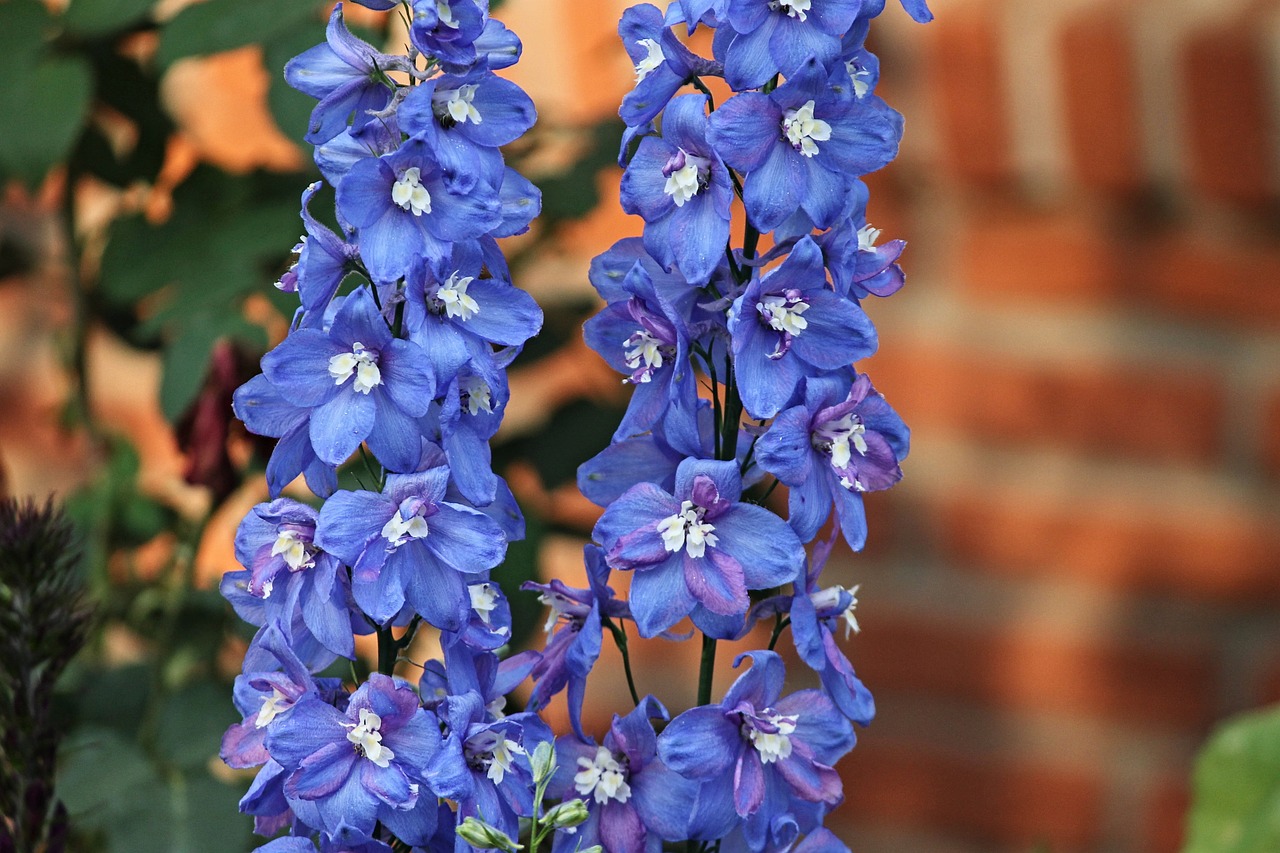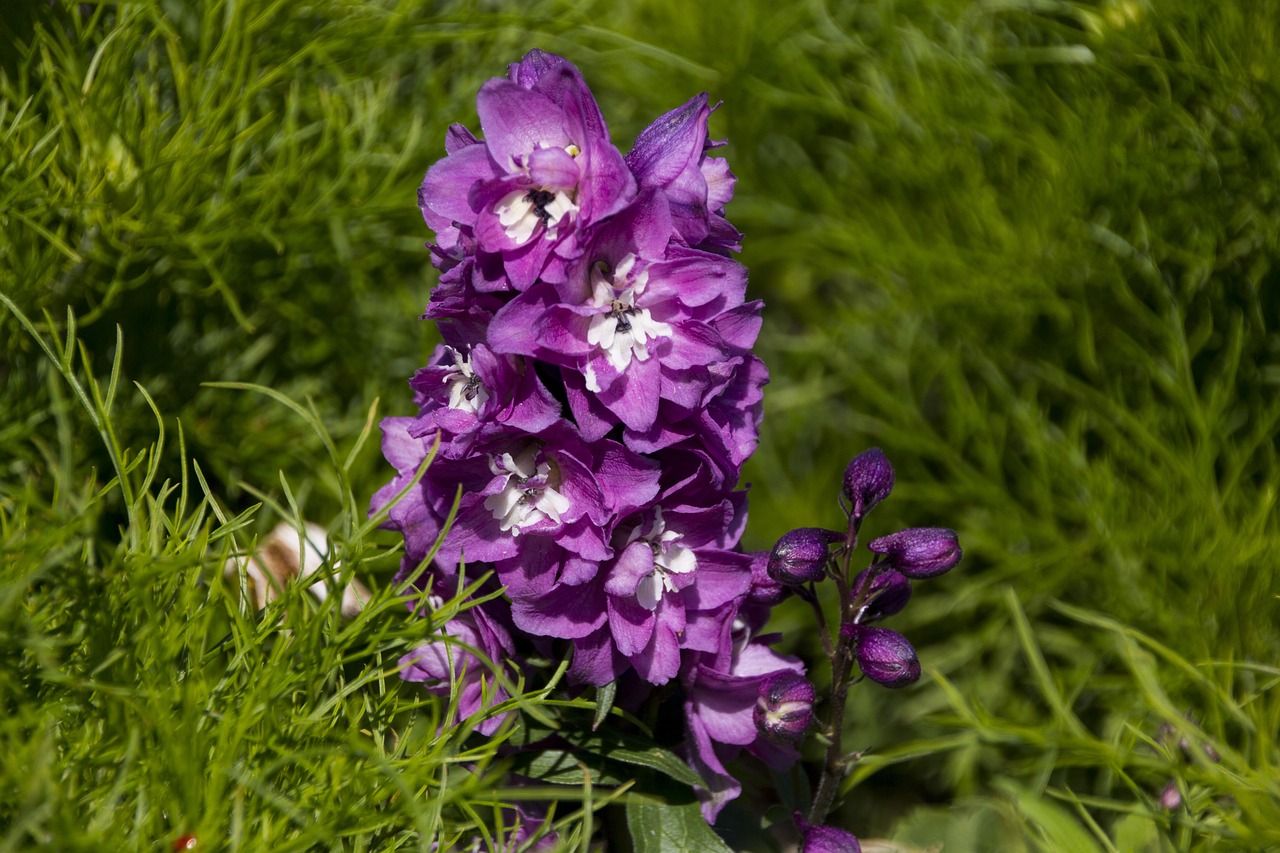Delphinium, also called larkspur, is a gorgeous plant known for its tall flower spikes lined with vibrantly colored flowers. While they may not look like it, these stunning flowers are actually in the buttercup family. There are over 300 species of delphiniums, so there’s bound to be some that fit your garden or lifestyle! There are perennial and annual delphinium species, some that are more tolerant of heat, cold, salt, and shade than others, and even species native to different regions. To get started growing your own delphiniums, here’s everything you need to know.
Planting delphinium

You can plant delphiniums in either spring or early fall. For spring plantings, wait until after the last frost of the year has passed, and for fall plantings, be sure to plant them a month or two before the first frost. You can also grow delphiniums in containers and start them indoors during any time of the year.
Delphiniums grow best in full sun, but they can tolerate partial shade in hotter climates. For indoor delphinium plants, you can supplement natural light with a grow light or move your delphinium outdoors during warm weather so your plant can soak up the sun. Whether you have them indoors or out, you should plant your delphiniums in rich, well-draining soil. Delphinium plants can grow quite tall and they will spread over time, so give them plenty of space.
Delphinium care

Delphiniums enjoys regular, deep waterings, but they can develop problems related to overwatering. Make sure the soil is dry before you water them, and avoid getting the leaves and flowers wet as much as possible. Water slowly to ensure the water has time to properly soak into the ground.
Depending on how naturally rich your soil is, you may not need to fertilize your delphiniums in the first year of planting. However, they will likely appreciate it in future years or if your soil is average or poor. It’s hard work growing those large, vibrant flower spikes, so your delphinium needs plenty of nutrients to keep it up! Applying a balanced fertilizer in spring and summer is a good idea, especially if you notice your plants are slowing down or not looking as bright as usual.
After your delphiniums have flowered and the flowers are beginning to fade, it’s time to cut them back. Some varieties of delphinium will self-seed, meaning you can leave the flowers to drop their seeds and expect to see new delphiniums next year. The new delphiniums will likely be hybrids and may not be identical to the delphiniums from before.
If you don’t want your delphinium plants to self-seed and want to encourage them to keep blooming, cut the flower spike at the base. Leave the leaves on the ground, and you can use the flower spikes as lovely decorations or dispose of them.
Common pests and problems

Common garden pests such as aphids, mites, whiteflies, and slugs can all bother your delphinium plants. Neem oil and insecticidal soap can help keep most of these pests at bay. Slugs and snails can be a bit trickier to handle. While there are chemical deterrents you can use, there are also a few organic options you can use, such as beer traps and copper tape. Making your garden appealing to birds can help, as many birds will eat slugs and other pests, keeping your plants safe and your local wildlife fed!
Delphiniums can also develop fungal infections if overwatered. Consistently wet leaves and soggy soil are two of the most common causes of fungal infections, including root rot and powdery mildew. Taking care when watering your delphinium goes a long way toward preventing these problems.
How toxic are delphiniums?

Delphiniums are quite toxic, and every part of the plant is dangerous to consume for both humans and animals. They can cause mild to moderate skin irritation if handled, so wearing gloves when tending to them (especially when cutting them back) is important. Not everyone has a skin reaction to delphinium, but approaching them with caution is wise, especially if you have a history of skin sensitivity.
Ingesting delphiniums can cause difficulty breathing and digestive problems, which can range in severity depending on how much was eaten and what part of the plant it was. The seeds and new growth have the highest concentration of toxins, but no part of the plant is safe. If you, a loved one, or a pet have ingested delphinium, it’s important to seek medical help as soon as possible.
Delphiniums are beautiful flowers, despite their danger. They’re also surprisingly easy to grow, as long as you’re mindful of where you plant them and how often you water them. So why not start planting your delphiniums today or pick up a young plant from your local nursery? When you see these stunning flowers, you’ll be sure to smile!




